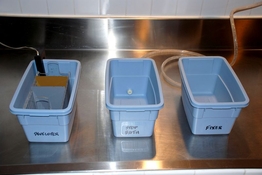chuckroast
Subscriber
@chuckroast
Maybe you would like to take a look in this post: Spots in negative, I can't find the cause.
I seems to me that your problem and mine are related even when we don't know the cause.
Ángel Luis
I am not the OP here, I was just trying to help figure out what was going on.
I did take a look at the thread you mention and that, combined with this thread, makes me suspicious of this lab box development machine.
As I recommended above, get a stainless Nikkor reel and lift rod and process the film in an open tank and see what happens. I agitate by lifting the reel with the rod and rotating it in the direction of the wind at the same time (so the film doesn't come off the reel).
You don't have to buy a fancy open tank. Any 1-2 litre plastic container will do, if you are willing to work in the dark. During development. I use three such containers:
1. Developer
2. Running water "stop bath"
3. Fixer
I develop and "stop" in the dark, put the film in fixer, and then lights on.
Here is one such configuration (I have several different ones depending on film format):







